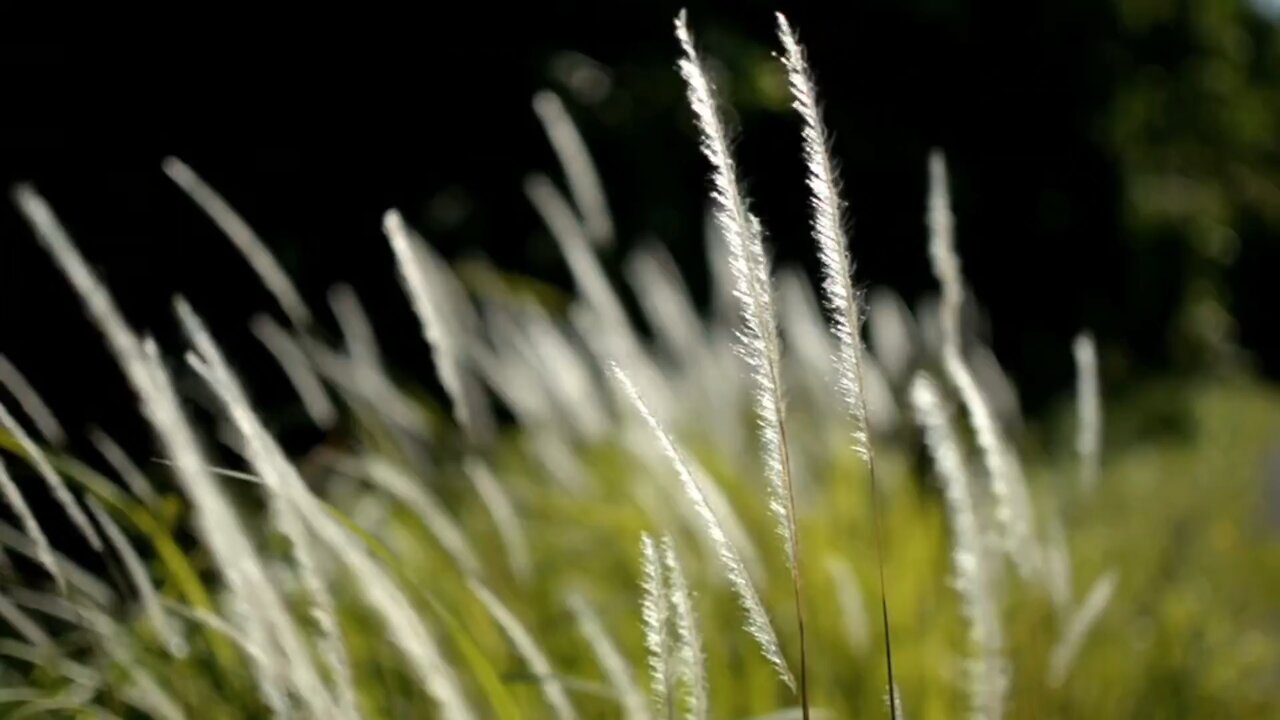Premium Only Content

"Battling the Spread of Cogon Grass"
Cogon grass (*Imperata cylindrica*) is a highly invasive perennial grass native to Southeast Asia. It’s recognized for its ability to aggressively colonize disturbed areas and is considered one of the world's worst invasive species due to its resilience and impact on ecosystems.
### Key Characteristics:
- **Appearance**: Cogon grass typically grows between 1 to 1.5 meters (3 to 5 feet) tall. It has sharp, pointed leaves with serrated edges, often giving it a cutting effect when touched. The leaves are typically green, but can turn reddish-brown in cooler climates. A key identifying feature is the prominent white midrib running down the center of the leaf.
- **Flowering and Reproduction**: The plant produces fluffy, white seed heads that resemble cotton, which are easily dispersed by wind. Each plant can produce thousands of seeds, which contributes to its rapid spread. Cogon grass also reproduces vegetatively through an extensive rhizome (underground stem) system, making it extremely difficult to eradicate once established.
- **Habitat**: It thrives in a wide range of environments, including forests, grasslands, agricultural areas, and along roadsides. It is highly adaptable to different soil types and can tolerate drought, fire, and poor soil conditions, which further contributes to its invasive potential.
### Ecological Impact:
- **Displacement of Native Species**: Cogon grass forms dense monocultures that outcompete native vegetation for resources like light, nutrients, and water. This leads to the displacement of native plants, reducing biodiversity and altering habitat for wildlife.
- **Increased Fire Risk**: The grass is highly flammable, and its presence increases the frequency and intensity of wildfires. After a fire, cogon grass can quickly re-sprout from its rhizomes, giving it a competitive advantage over other plants.
- **Soil Degradation**: It can degrade soil quality over time, as its dense root system can change soil composition and structure, making it harder for other plants to establish.
### Management and Control:
Controlling cogon grass is challenging due to its robust rhizome system and high seed production. Methods include:
- **Mechanical Control**: Repeated mowing or cutting can weaken the plant over time, but it often requires consistent effort and doesn’t guarantee complete eradication.
- **Chemical Control**: Herbicides, particularly those targeting grasses, can be effective but often require multiple applications. Glyphosate and imazapyr are commonly used.
- **Prescribed Burning**: While cogon grass is fire-adapted, controlled burns can be part of an integrated management strategy when combined with other methods like herbicide application.
- **Biological Control**: Research is ongoing to find natural predators or diseases that can help control cogon grass, but no widely effective biological control methods are currently available.
### Global Spread:
Cogon grass has spread far beyond its native range and is now found in parts of Africa, the Americas, and Australia. It was introduced to some regions intentionally, for purposes such as soil stabilization and forage, but has since become a significant invasive problem.
Efforts to control cogon grass involve a combination of public awareness, management practices, and research into more effective control methods. The challenge is significant, given the plant's resilience and adaptability.
-
 2:05:52
2:05:52
TimcastIRL
7 hours agoTrump Russia HOAX DECLASSIFIED, Obama Officials EXPOSED In “TREASONOUS CONSPIRACY”
166K148 -
 2:58:12
2:58:12
SavageJayGatsby
7 hours agoLockdown Protocol - Wedding in 3 Months! - Halftway to 100!
59.9K2 -
 2:41:27
2:41:27
Mally_Mouse
10 hours agoFriend Friday!! - Let's Play! - Lockdown Protocol
45.5K4 -
 9:43
9:43
MattMorseTV
9 hours ago $10.18 earnedTulsi just DROPPED a BOMBSHELL.
55.3K58 -
 3:54:03
3:54:03
SynthTrax & DJ Cheezus Livestreams
18 hours agoFriday Night Synthwave 80s 90s Electronica and more DJ MIX Livestream Knight Ride Edition
37.5K5 -
 2:31:18
2:31:18
Laura Loomer
9 hours agoEP134: EXPOSED: Microsoft Allowed China Access To DOD Cyber Systems
186K120 -
 2:46:43
2:46:43
FusedAegisTV
11 hours agoRumble Smackdown! #004 Tekken 8 $100+ Online Tournament !bracket !prizepool
51K -
 1:53:41
1:53:41
The Mike Schwartz Show
14 hours agoTHE MIKE SCHWARTZ SHOW Evening Edition 07-18-2025 with guest Congressman Buddy Carter!
49.8K39 -
 3:59:07
3:59:07
DopeFrags
12 hours agoOne of the best survival games ever? | Grounded
16.9K -
 1:03:43
1:03:43
Sarah Westall
8 hours agoPlanning is Over, War has Started: First Stage of Economic Global War: Commodities w/ Andy Schectman
38K5